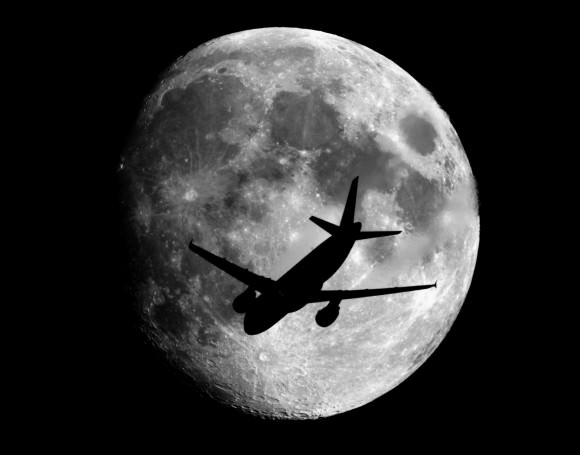Billions of years ago, so the theory goes, a Mars-sized body (sometimes called "Theia") smashed into our young planet and caused a near-catastrophe. Earth fortunately survived the risk of blowing apart, and the fragments from the crash gradually coalesced into the Moon that we see today.
Even though this happened a heck of a long time ago, scientists believe they have found traces of Theia in lunar rocks pulled from the Apollo missions.
The isotopes or types of oxygen revealed in the new research appear to be different between the Earth and the Moon. And that's important, because it implies that a body of different composition caused the changes. "If the Moon formed predominantly from the fragments of Theia, as predicted by most numerical models, the Earth and Moon should differ," the study states.
[caption id="attachment_106655" align="alignnone" width="580"]
An airplane at about 2,400 meters above the ground passes in front of the Moon on its way to landing at the Charles de Gaulle Airport in Paris, France. Taken from about 70 km from Paris. Credit and copyright: Sebastien Lebrigand.[/caption]
Scientists scanned samples from the Apollo 11, 12 and 16 missions with scanning electron microscopes that are more powerful than what was available in the 1960s and 1970s, when scientists first looked at these samples from the manned moon missions.
Before, the "resolution" of these microscopes couldn't find any significant differences, but the new data reveals the moon rocks have 12 parts per million more oxygen-17 than the Earth rocks.
"The differences are small and difficult to detect, but they are there," stated lead researcher Daniel Herwartz, who was formerly with the University of Gottingen and is now with the University of Cologne. "This means two things; firstly we can now be reasonably sure that the giant collision took place. Secondly, it gives us an idea of the geochemistry of Theia."
The work was
published in Science
and will also be presented at the Goldschmidt geochemistry conference in California on June 11.
 Universe Today
Universe Today

